Fragmentation: 2024 Annual Cinema Studies Graduate Student Conference
When and Where
Speakers
Description
The CSGSU, in partnership with the Cinema Studies Institute, Archive/Counterarchive, The Department of Italian Studies, the Jackman Humanities Institute, the Centre for the Study of the United States, and the Asian Institute at the Munk School is happy to announce the details of our upcoming annual graduate student conference, themed Fragmentation.
Please join us at Innis College on Friday, February 2nd at 3:00pm for an opening keynote by special guest Dr. Maggie Hennefeld, titled “Fragments of Film History: from Nitrate Ragpicking to Feminist Fabulation.” The keynote will also be livestreamed. Saturday, February 3rd will be a day of exciting conference panels beginning at 9:00am. See conference schedule below.
February 2nd
|
3:00 - 5:00 KEYNOTE ADDRESS innis town hall Dr. Maggie Hennefeld “Fragments of Film History: from Nitrate Ragpicking to Feminist Fabulation” |
|
5:00 - 7:30 WELCOME RECEPTION second floor lounge |
February 3rd
|
8:30 - 9:00 COFFEE second floor lounge |
|
|
9:00 - 10:25 PANEL 1A: (IN) STITCHES TOGETHER room 312 Moderator: Kate J. Russell Hannah Fleisch “Don’t Try This at Home: Fragmented Collectivity in DIY Rude-Boy Media” Trinankur Banerjee “A Genre and its Fragments: Anecdote as Method in Writing the History of Bengali Comedy” Luke Kuplowsky “A Playground of Images: Comic Transcendence and Community in How to With John Wilson” |
9:00 - 10:25 PANEL 1B: FRAGMENT(S) AS ARCHIVE(S) room 222 Moderator: Daniele Iannucci Alex Neufeldt “Off-Leash in the Ruins of Geo-Cities” Lara Bulger “The Arctic Imaginary: An Alternative Archive of Far North Cinema” Jake Pitre “Nothing, Forever: Remix Aesthetics for the AI Age” |
|
10:40 - 12:05 PANEL 2A: PHILOSOPHICAL FRAGMENTS room 312 Moderator: Tamar Hanstke Andrea Oranday “Experimental Film and Elucidation” Lawrence Garcia “Adorno’s Fireworks: Identity and Individuation in the Theory of Art” Heath Valentine “Working with Fragments/ Remounting Time: Film and Modern Art History” |
10:40 - 12:05 PANEL 2B: LIFE IMITATING FRAGMENTING ART room 222 Moderator: Jixin Jia Interpreter: Ben Koonar Santasil Mallik “Seeing/Surmising/Surviving: Decolonial Routes in Midnight Traveller” Chedly Boughedir “Analyse par le biais du glitch des opportunités narratives et visuelles de la bande dessinée, cas d’étude: Glitchy Moon” Peggy Fussell “Honey Drop” |
|
12:05 - 1:05 LUNCH second floor lounge |
|
|
1:15 - 3:15 ROUNDTABLE ss 2125 Dr. Maggie Hennefeld Dr. Bliss Lim Dr. Rijuta Mehta Dr. Michelle Cho “Speculative Approaches to Archival Film Practice” |
|
|
3:30 - 5:15 PANEL 3A: SELF(S) AND OTHER(S) room 312 Moderator: Thomas Quist Min Lee “evidence of her & traces of him: reconciling with pre-trans ephemera” Sergio De Iudicibus “Narcissus and the Dangerous Fragmentation of Self” Revantika Gupta “Cinematic Uncitizenship in Desi Hip-Hop Music Videos” Marcus Prasad “Configuring Cinema’s Desire: Contemporary Horror and its Rubble” |
3:30 - 5:15 PANEL 3B: POLITICALLY FRAGMENTED room 222 Moderator: Christian David Zeitz Kai Yao “Fragmented Mediums, Queer Suture: Women’s Cross-Dressing in Republican Shanghai” Michael Sooriyakumaran “A Political Film Without a Message: The Separation of Elements, Self-Reflexivity, and Estrangement in Danièle Huillet and Jean-Marie Straub’s The Bridegroom, the Comedienne, and the Pimp” Olga Tchepikova-Treon “Misfits still Needed: Disability, Performance and Excess in Frank Moore’s Outrageous Dream” Hong Liu “Ground for Fragments: Jean-Marie Straub and Danièle Huillet’s Schwarze Sunde (1989)” |
|
7:00 CONFERENCE AFTER-PARTY the harbord house |
* 15 minute breaks between panels and rountable sessions


